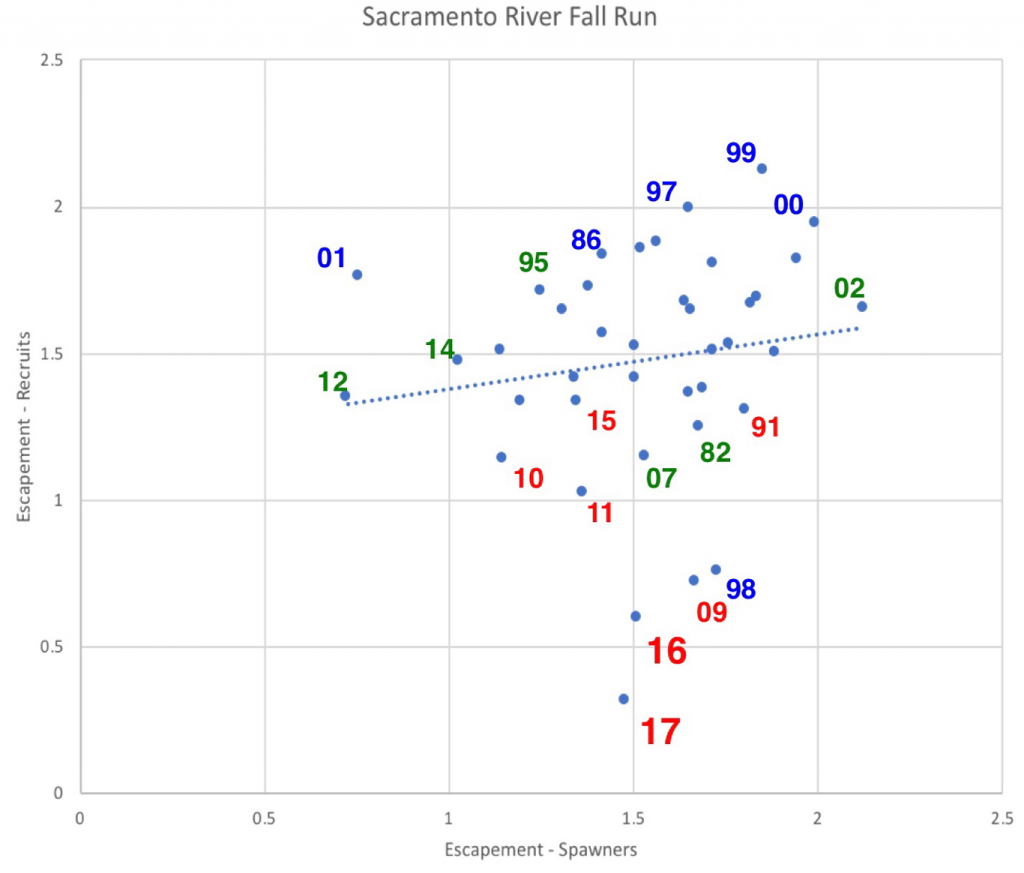In a 9/20/18 Maven’s Science News an article describes a record low index of juvenile salmon from this past winter-spring Red Bluff screw trap survey. The article states that the poor juvenile numbers foreshadow a poor Sacramento River salmon run in 2020. The article is vague as to the cause. The article implies that a likely cause for the poor 2017 adult run and record low 2018 Red Bluff trap index was the trucking of Coleman Hatchery smolts to the Bay during the 2014 drought, which then did not find their way back to Coleman as adults.
The article fails to mention two likely primary causes of the record low index:
- Poor rearing and migrating conditions in the lower Sacramento River in winter-spring 2018.1
- A 50% reduction in the number of smolts released by the Coleman Hatchery in 2018 (6 million instead of the normal 12 million) from lack of eggs.2
Regardless of the cause, the prognosis for the 2020 run remains grim, as stated in the article. What the article does not forecast is a likely grim forecast for 2018 and 2019. These runs are likely to be low because:
- All the Coleman releases in 2016 and 2017 were at the hatchery, with none trucked to the Bay which ensured poor survival of the smolts prior to reaching the ocean;
- There were poor juvenile rearing and migrating river conditions in winter-spring in 2016 and 2017,
- There were poor spawning run river conditions in summer/fall 2015 and 2016, and
- There were poor spawner numbers in 2016 as in 2017 (Figure 1).

Figure 1. Spawner-recruit relationship for fall-run in-river estimates of run size. Number indicates spawner estimate for that year (y-axis) as derived from spawners three years earlier (x-axis). Color indicates winter-spring rearing andmigration conditions for that brood (winter-spring 2015 for spawners in 2017). Red denotes dry year in first winter-spring. Green denotes normal years. Blue denotes wet years. Source: http://calsport.org/fisheriesblog/?p=2205 ).
